How to Make a Tote Bag: An Easy Sewing Project for Beginners
Are you ready to unleash your creativity and dive into the world of sewing? Making a tote bag is not only a fun project, but it also results in a stylish and functional accessory that you can use every day. Whether you're heading to the grocery store, the beach, or just need a handy bag for your essentials, a tote bag is the perfect solution. This article provides a step-by-step guide for beginners on creating a tote bag, including materials, techniques, and tips to ensure a successful sewing experience.
Before you even think about picking up that sewing machine, you need to focus on selecting the right materials. The fabric you choose will determine the look and durability of your tote bag. For beginners, fabrics like cotton or canvas are highly recommended due to their ease of handling and availability. Let’s break down some of the choices:
- Cotton Fabric: Lightweight and easy to sew, perfect for everyday use.
- Canvas: Heavier and more durable, ideal for carrying heavier items.
- Denim: Gives a stylish look and can withstand wear and tear.
In addition to fabric, you’ll need some essential tools like a good pair of fabric scissors, a measuring tape, and a sewing machine. Don't forget to pick a thread that matches your fabric; it’s like the icing on the cake!
Now that you have your materials, it's time to prepare your fabric. Proper preparation is key to achieving a polished final product. Start by washing your fabric to remove any chemicals or dirt that might be lingering from the store. This step is crucial because it prevents any unexpected shrinkage once your bag is complete.
When washing your fabric, use cold water and a gentle cycle. After washing, let it air dry or tumble dry on low heat. This method ensures that your fabric is clean and ready for cutting. Once your fabric is dry, it’s time to iron it. A smooth surface is essential for accurate cutting and sewing.
Ironing may seem tedious, but it’s a step you shouldn't skip. Set your iron to the appropriate setting for your fabric type. For cotton, a medium-high setting works best. Glide the iron smoothly over the fabric, removing any wrinkles. This not only makes your fabric look neat but also helps with accurate measurements.
Accurate cutting is vital for a well-structured tote bag. Use your measuring tape to determine the dimensions of your bag. A common size for a tote bag is 15 inches wide and 16 inches tall. Mark your measurements using a fabric marker and carefully cut along the lines. Remember, measure twice, cut once!
Designing your tote bag allows for personalization and creativity. Think about the features you want to include, such as pockets or unique straps. You could even add a fun lining fabric for an unexpected surprise when you open your bag. The possibilities are endless! Sketch out your ideas before proceeding to the sewing stage.
With your materials prepared and your design in mind, it’s time to sew! This is where your vision starts to take shape. Begin by pinning your fabric pieces together, ensuring that everything is aligned correctly. A good tip is to use clips instead of pins for thicker fabrics.
Familiarize yourself with essential sewing techniques that will help you construct your tote bag efficiently. Start by using a straight stitch for the seams. Make sure to backstitch at the beginning and end of each seam to secure them. As you sew, keep an even pace to maintain a consistent stitch length.
Don’t forget to add your personal touch! You can incorporate pockets for organization, embellishments like patches or embroidery, or even a custom design on the front. These small details can transform your tote bag from ordinary to extraordinary!
Q: How long will it take to make a tote bag?
A: Depending on your sewing speed and experience, it can take anywhere from 1 to 3 hours.
Q: Can I use different types of fabric?
A: Absolutely! Just make sure that the fabrics you choose are compatible in terms of weight and texture.
Q: What if I make a mistake while sewing?
A: Mistakes happen! You can always rip out the stitches and try again. Sewing is all about practice.

Choosing the Right Materials
When embarking on your tote bag adventure, the first step is to choose the right materials. This choice is crucial because it not only affects the look of your bag but also its durability and functionality. Think of it as laying the foundation for a house; if the foundation is weak, the entire structure is at risk. So, what materials should you consider? Let's dive into the world of fabrics, threads, and essential tools that will set you up for success.
First off, let's talk about fabric. The type of fabric you select will determine the overall vibe of your tote bag. Here are a few popular fabric options:
- Cotton Canvas: This is a sturdy, durable fabric that holds its shape well, making it ideal for tote bags.
- Denim: For a trendy and robust look, denim is a fantastic choice. It adds a casual flair and is incredibly durable.
- Ripstop Nylon: If you’re looking for something lightweight and water-resistant, ripstop nylon is perfect. It’s great for outdoor use.
- Decorative Fabrics: Consider using fabrics with patterns or prints for a unique touch. Just ensure they are sturdy enough to handle the weight of your items.
Next, let’s not forget about thread. The right thread can make or break your project. Look for a thread that complements your fabric choice. For instance, if you’re using cotton fabric, opt for cotton thread. If you’re working with synthetic fabrics, polyester thread is your best bet due to its strength and flexibility. A good rule of thumb is to choose a thread that is at least as strong as the fabric you’re using.
Now, onto the tools! Having the right tools is like having the right instruments in an orchestra; they can help you create a masterpiece. Here’s a quick rundown of essential tools you’ll need:
- Sewing Machine: A reliable sewing machine is essential for stitching your tote bag together efficiently.
- Fabric Scissors: Invest in a good pair of fabric scissors for clean cuts.
- Measuring Tape: Accurate measurements are key to a well-structured bag.
- Pins or Clips: These will help hold your fabric pieces together while you sew.
- Iron: An iron is crucial for preparing your fabric and ensuring crisp seams.
In summary, choosing the right materials is the backbone of your tote bag project. By selecting the appropriate fabric, thread, and tools, you’ll pave the way for a successful sewing experience. Think of it as gathering the ingredients for a delicious recipe; the better the ingredients, the tastier the final product will be. So, take your time in this step, and you’ll be well on your way to creating a stylish and functional tote bag that reflects your personal style!
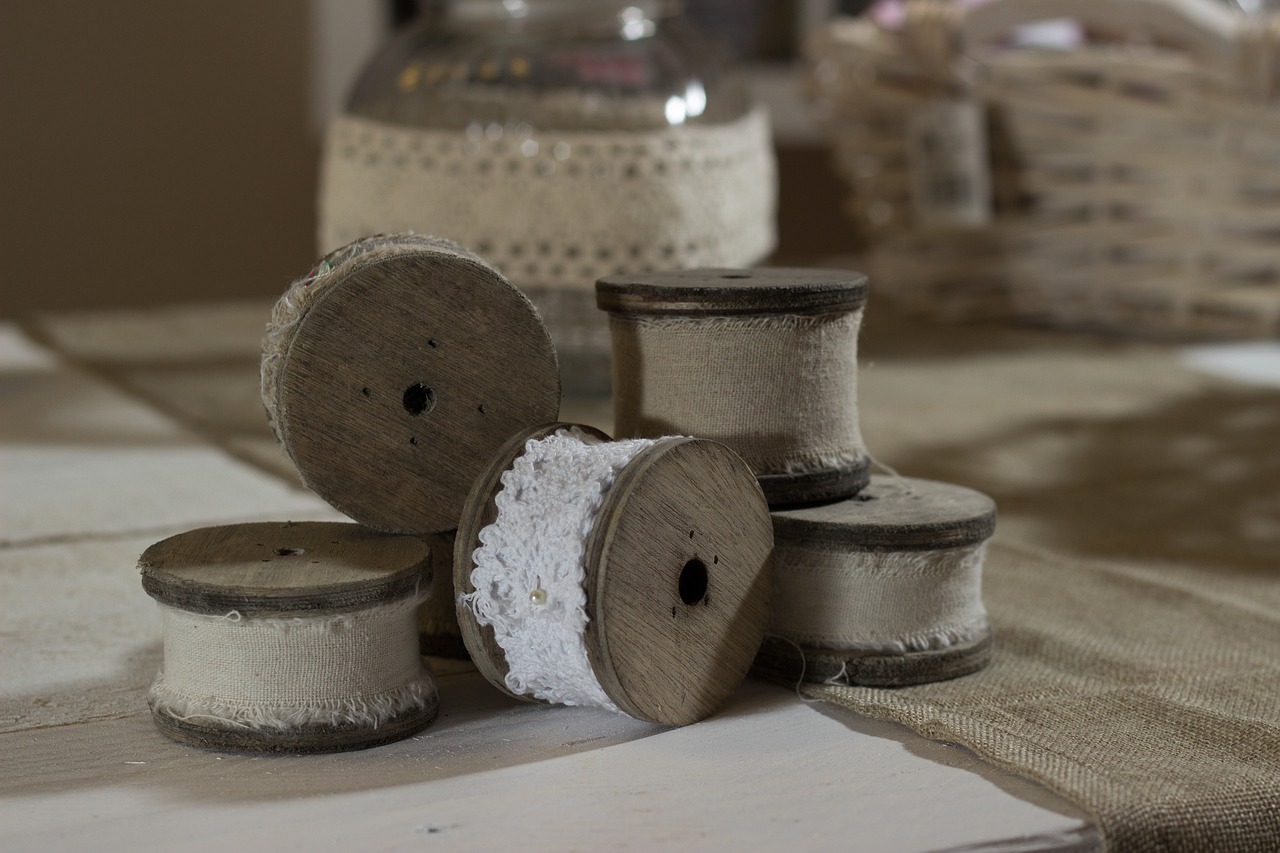
Preparing Your Fabric
Before diving into the exciting world of sewing your own tote bag, it’s absolutely essential to prepare your fabric properly. Think of this step as the foundation of a house; if the foundation isn’t solid, the entire structure could crumble. Proper preparation not only ensures that your fabric looks great but also helps prevent issues like shrinkage and distortion later on. So, let’s roll up our sleeves and get started!
First things first, let’s talk about washing your fabric. It might seem like a hassle, but trust me, it’s a game changer. Washing your fabric before you start sewing can eliminate any chemicals or residues that might be lurking from the manufacturing process. Plus, it helps to pre-shrink the fabric, which is crucial if you want your tote bag to maintain its shape over time. For most fabrics, a gentle cycle in cold water will do the trick. Just remember to check the care label for specific instructions!
Once your fabric is washed, give it a good shake and hang it to dry. This not only prevents wrinkles but also allows any remaining moisture to evaporate. After it’s dried, it’s time to iron. Yes, I know ironing can feel like a chore, but it’s a necessary step. A smooth, wrinkle-free surface makes cutting and sewing so much easier.
When it comes to ironing, here are some tips to keep in mind: use the appropriate heat setting for your fabric type, and always iron on the reverse side if you’re dealing with delicate materials. If you encounter stubborn wrinkles, a little steam can work wonders. Just be careful not to scorch your fabric!
Now that your fabric is clean and wrinkle-free, it’s time to cut it. Accurate cutting is vital for ensuring that your tote bag turns out as you envision. Grab a good pair of fabric scissors, a measuring tape, and a rotary cutter if you have one. Measure twice, cut once! This old saying rings true in sewing. Make sure to lay your fabric flat on a cutting mat and use weights or pins to hold it in place while cutting. This will help prevent any shifting that could lead to uneven edges.
Remember, the dimensions of your tote bag will depend on how big or small you want it to be. A standard tote bag is usually around 15 inches wide and 15 inches tall, but feel free to customize it to your liking. Just keep in mind that if you alter the dimensions, you’ll need to adjust the straps accordingly.
As you prepare your fabric, don’t forget to keep the environment in mind. Consider using eco-friendly fabrics like organic cotton or linen. Not only are they better for the planet, but they can also add a unique touch to your tote bag.
In summary, preparing your fabric is a crucial step in your tote bag-making journey. From washing and ironing to cutting accurately, each action contributes to the overall quality and durability of your final product. So take your time, enjoy the process, and soon you’ll be ready to move on to the fun part—sewing your tote bag together!
- Do I need to wash all types of fabric before sewing? Yes, it’s recommended to wash most fabrics to prevent future shrinkage and remove any chemicals.
- What if my fabric shrinks after washing? Pre-washing your fabric should minimize this risk, but always check the care instructions and choose fabrics that are less prone to shrinkage.
- Can I skip ironing my fabric? While it’s possible, skipping ironing can lead to uneven cuts and sewing difficulties. It’s best to iron for a smooth start.
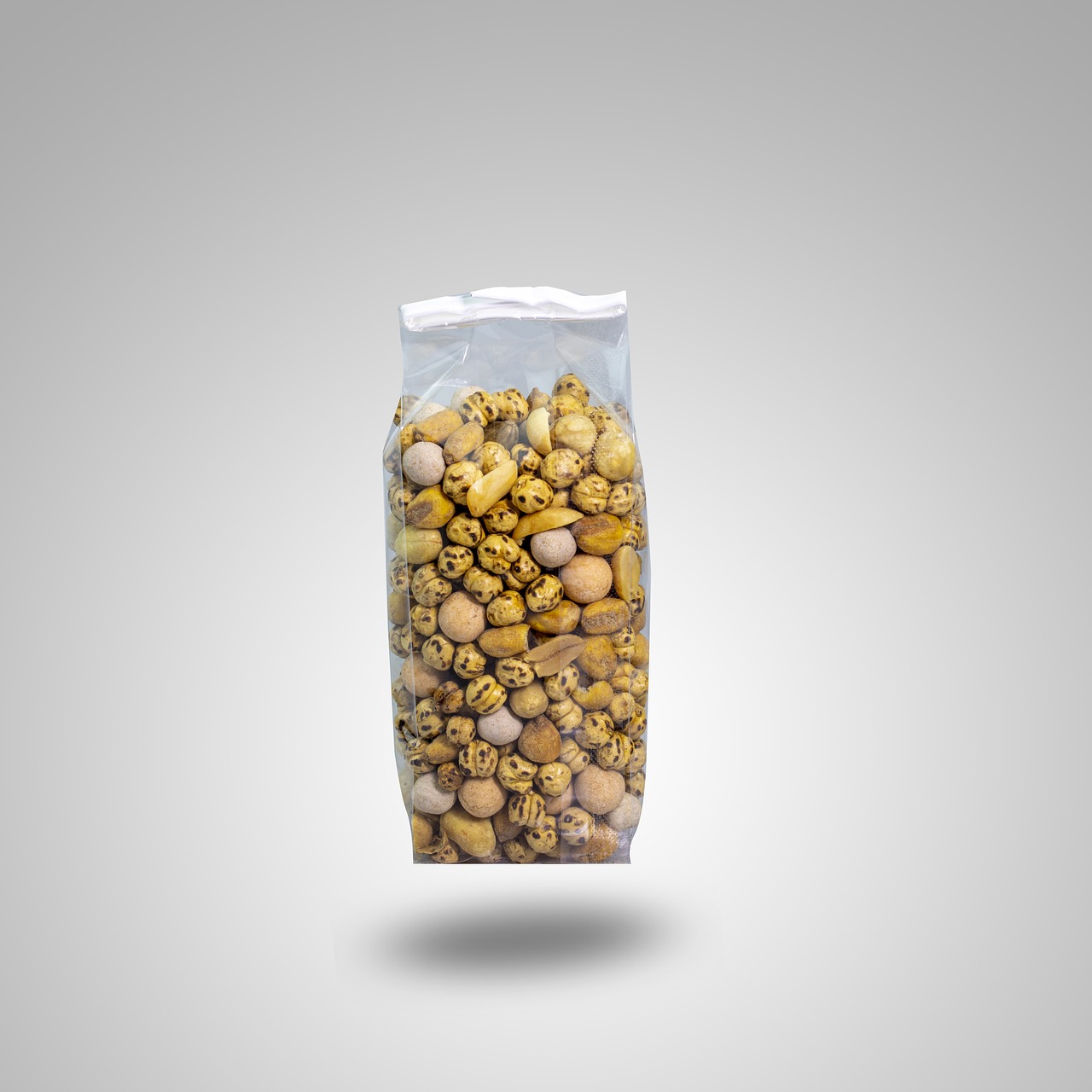
Washing and Prepping Fabric
When it comes to creating your very own tote bag, one of the most important steps is washing and prepping your fabric. You might be wondering why this is so crucial. Well, imagine pouring your heart and soul into a beautiful bag only to find it shrinks or warps after the first wash! To avoid this nightmare, let’s dive into the best practices for prepping your fabric.
First things first, you’ll want to wash your fabric before you even think about cutting it. This step is essential because most fabrics, especially cotton, can shrink. By washing your fabric ahead of time, you ensure that any shrinkage occurs before you sew, leaving you with the correct dimensions for your tote bag. Generally, you can machine wash your fabric on a gentle cycle with cold water. Make sure to check the care label on your fabric, as some materials may require special handling.
After washing, it’s time to dry your fabric. You can either air dry it or use a dryer, but again, refer to the care instructions. If you choose to use a dryer, it’s usually best to dry on a low setting to prevent any damage. Once your fabric is dry, give it a good shake to remove any wrinkles. If it’s still a bit crinkly, don’t worry! We’ll tackle that in the next step.
Now comes the ironing. Ironing your fabric not only removes wrinkles but also helps to set the fibers, making it easier to cut and sew. Use a steam iron for best results, and always check the heat settings for your specific fabric type. For instance, delicate fabrics like silk require a lower temperature, while cotton can handle a higher heat. As you iron, make sure to press down gently and avoid dragging the iron across the fabric to prevent stretching.
Once your fabric is washed and ironed, it’s time to move on to cutting. But before we get to that, let’s talk about cutting accuracy. To achieve precise dimensions for your tote bag, it’s essential to measure carefully. Use a clear ruler and fabric chalk to mark your cutting lines. This will ensure that your pieces are even and aligned, making assembly a breeze. Remember, a well-prepped fabric is the foundation of a successful sewing project!
In summary, washing and prepping your fabric is a vital part of the tote bag-making process. By taking the time to wash, dry, and iron your fabric, you set yourself up for success. So, grab that fabric and give it the care it deserves before diving into the fun part—sewing!
- Why do I need to wash my fabric before sewing? Washing your fabric removes any chemicals or sizing that may have been applied during manufacturing and helps prevent shrinkage later on.
- Can I skip washing my fabric? It’s not recommended, especially for natural fibers like cotton, as they are prone to shrinkage.
- How should I dry my fabric after washing? You can air dry or use a dryer on a low setting, depending on the fabric type. Always check the care label!
- What if my fabric is wrinkled after washing? Ironing your fabric will help smooth out any wrinkles. Use the appropriate heat setting for your fabric type.

Ironing Techniques
Ironing your fabric correctly can make a significant difference in your sewing project, especially when it comes to creating a stylish and functional tote bag. A smooth, wrinkle-free surface not only enhances the appearance of your fabric but also ensures that your cuts are precise and your seams are clean. So, how do you achieve that perfect finish? Here are some essential ironing techniques to keep in mind:
First off, always check the care label on your fabric. Different materials require different heat settings. For example, cotton can handle high heat, while delicate fabrics like silk need a much lower temperature. Using the right heat setting will help you avoid damaging your fabric. If you’re unsure, start with a lower temperature and gradually increase it until you find the sweet spot.
Next, consider using a pressing cloth. This is a simple piece of fabric that you place between your iron and your main fabric. It acts as a protective barrier, preventing direct heat contact, which can scorch or shine your fabric. A pressing cloth is especially useful for delicate or printed fabrics.
When you start ironing, always work in sections. Lay your fabric flat on the ironing board and start from one end, moving your iron in smooth, even strokes. Avoid using a back-and-forth motion, as this can stretch the fabric. Instead, lift the iron off the fabric and reposition it as needed. This technique not only helps to prevent any unwanted stretching but also ensures that you cover every inch of your fabric.
Additionally, consider the steam function on your iron. Steam can be a game-changer, especially for stubborn wrinkles. If your iron has a steam option, use it liberally while ironing. The steam relaxes the fibers in the fabric, making it easier to smooth out wrinkles. However, be cautious with fabrics that can’t handle moisture, as too much steam can leave water spots.
Lastly, if you're working with multiple layers of fabric or thicker materials, using a tailor's ham can be beneficial. This is a firm, rounded cushion that helps you iron seams and curves without flattening them. It’s perfect for achieving a professional look on your tote bag's handles or any curved sections.
In summary, mastering these ironing techniques will not only improve the quality of your tote bag but also enhance your overall sewing experience. Remember, a well-pressed fabric can make all the difference, turning a simple tote bag into a stunning accessory that showcases your creativity and skill.
- How often should I iron my fabric before sewing? It's best to iron your fabric each time you cut it to ensure a smooth surface for accurate measurements.
- Can I use a steam iron on all types of fabrics? No, always check the care label. Delicate fabrics may be damaged by steam.
- What is a pressing cloth, and do I really need one? A pressing cloth protects your fabric from direct heat. It’s highly recommended, especially for delicate or printed materials.

Cutting Fabric Accurately
When it comes to sewing your tote bag, one of the most critical steps is cutting your fabric accurately. Imagine trying to assemble a puzzle with mismatched pieces; it just won’t work! To ensure your tote bag comes together beautifully, you need to start with precise measurements and clean cuts. First, gather your tools: a sharp pair of fabric scissors or a rotary cutter, a cutting mat, and a ruler or measuring tape. These tools will be your best friends in this process.
Before you dive into cutting, it’s essential to lay your fabric out on a flat surface. This helps you visualize the dimensions you’ll need and ensures that your fabric lies as flat as possible. If your fabric has a pattern, take a moment to plan how the design will align on your tote bag. You wouldn’t want a flower cut in half, right? Once you have your layout, measure and mark your cutting lines with a fabric chalk or a marker that washes out easily.
When measuring, always double-check your dimensions. It’s like when you’re baking a cake; one wrong measurement can lead to a total disaster! For a standard tote bag, you might want to cut two rectangles for the body, typically around 15 inches wide by 16 inches tall, but feel free to adjust based on your desired size. Here’s a quick reference table for common tote bag dimensions:
| Bag Size | Width (inches) | Height (inches) |
|---|---|---|
| Small Tote | 12 | 14 |
| Medium Tote | 15 | 16 |
| Large Tote | 18 | 20 |
After marking your fabric, it’s time to cut! Use your scissors or rotary cutter to follow the lines you’ve drawn. If you’re using scissors, try to keep the fabric steady with one hand while you cut with the other. This technique helps to ensure that you don’t accidentally shift the fabric, which could result in uneven edges. For rotary cutters, make sure your cutting mat is underneath to protect your surfaces and achieve a clean cut.
Lastly, once you’ve cut your pieces, take a moment to inspect them. Are the edges clean and straight? If you notice any fraying or uneven cuts, now is the time to fix those before you start sewing. Remember, the foundation of a great tote bag is all in the details, and taking the time to cut accurately will pay off in the end!
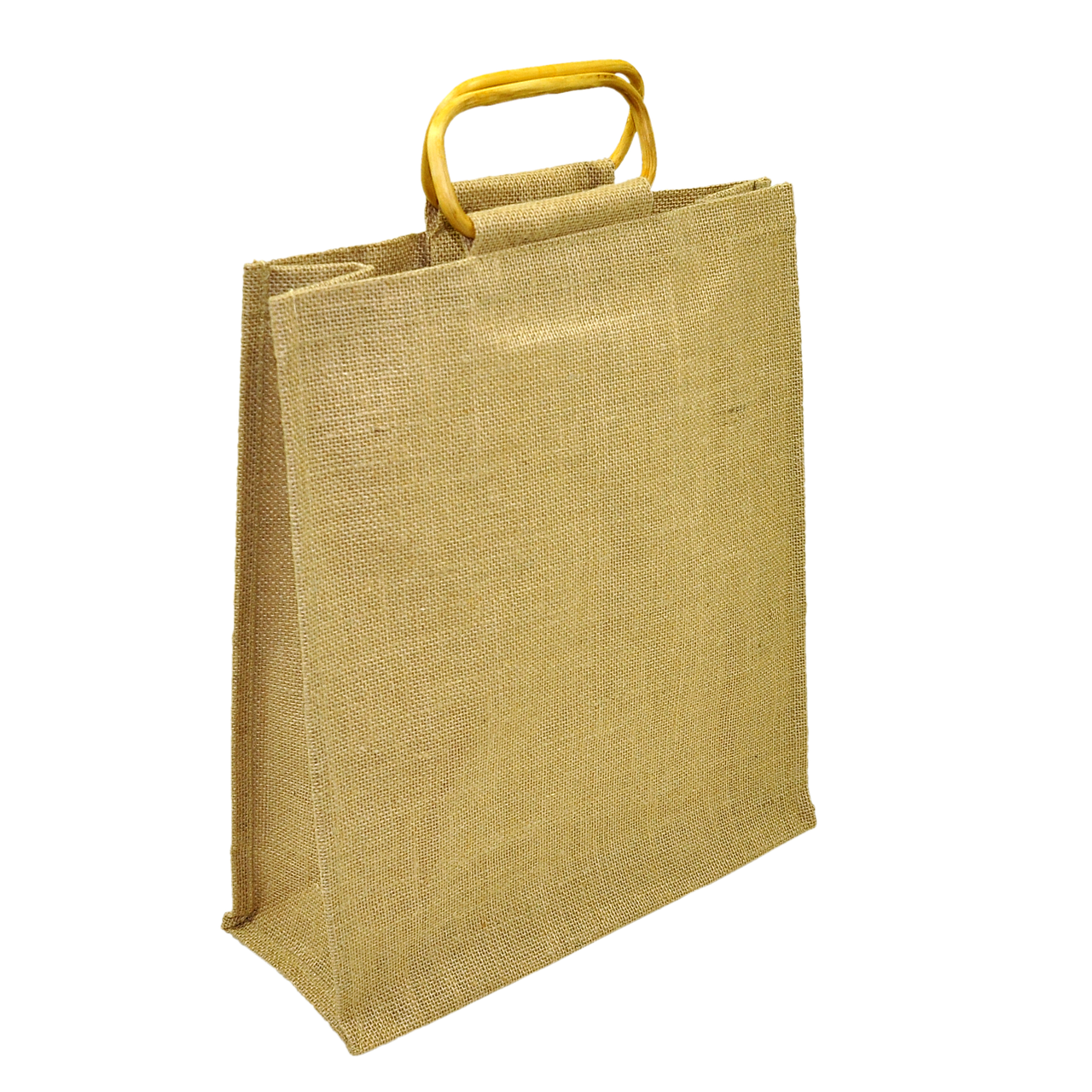
Creating the Tote Bag Design
Designing your tote bag is where the magic truly begins! This is your chance to let your creativity shine and create something that reflects your personal style. Whether you want a minimalist look or something more vibrant and eye-catching, the design process is all about making choices that resonate with you. The first step is to envision what you want your tote bag to look like. Consider the size, shape, and functionality. Do you want a large bag for carrying groceries, or a smaller version for daily essentials? Understanding the purpose of your bag will guide your design decisions.
Next, think about the fabric patterns and colors you want to use. Solid colors can be chic and versatile, while bold patterns can add a fun twist to your bag. You might even want to mix and match fabrics for a unique look. For example, using a solid color for the body of the bag and a patterned fabric for the straps can create a beautiful contrast. Don't be afraid to experiment with different combinations!
Another important aspect of your design is the features you want to incorporate. Here are some ideas to consider:
- Pockets: Adding pockets can enhance functionality. Think about whether you want interior pockets for organization or exterior pockets for easy access.
- Strap Length: The length of the straps can change the way your bag feels. Long straps can allow for shoulder carrying, while shorter straps can create a handbag style.
- Closure: Consider how you want your bag to close. A simple open-top design is easy to access, while a button or zipper closure can provide added security.
Once you have a vision, it’s time to sketch your design. Don’t worry about being an artist; a simple drawing will do! This sketch will serve as a blueprint for your sewing project. It doesn’t have to be perfect, but it should give you a clear idea of the dimensions and layout of your tote bag.
Finally, gather inspiration from various sources. Look at tote bags in stores, browse online for DIY projects, or even check out social media platforms like Pinterest and Instagram. You might find a design element that sparks an idea for your own bag!
In summary, creating a tote bag design is a fun and fulfilling process. By considering the purpose of your bag, choosing the right fabrics, and incorporating unique features, you can craft a tote that not only serves its function but also showcases your personality. So grab your sketchbook and let your imagination run wild!
Q: What type of fabric is best for a tote bag?
A: Cotton canvas is a popular choice due to its durability and ease of sewing. However, you can also use denim, linen, or even recycled materials for a unique touch.
Q: How do I determine the size of my tote bag?
A: Consider what you plan to carry in your tote. Measure your items and add a few inches for seam allowances to find the right dimensions.
Q: Can I add embellishments to my tote bag?
A: Absolutely! You can use embroidery, fabric paint, or patches to personalize your tote bag further.
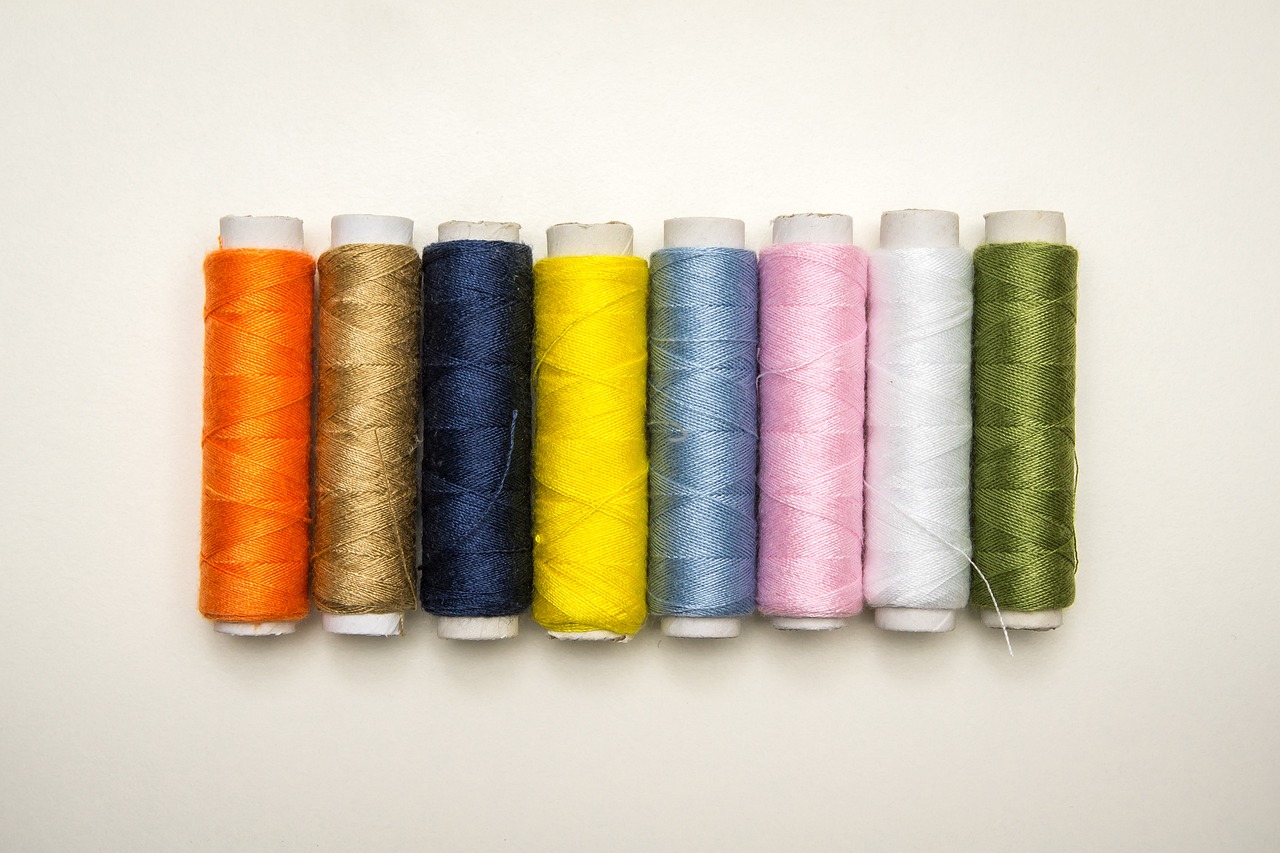
Sewing Your Tote Bag
Now that you've gathered all your materials and prepped your fabric, it’s time to dive into the exciting part: sewing your tote bag! This step can feel a bit daunting, especially for beginners, but don’t worry; I’m here to guide you through it. Think of this process like building a sandcastle: you start with a solid foundation and add layers to create something beautiful. So, roll up your sleeves, and let’s get started!
First, you’ll want to set up your sewing machine. Make sure it's threaded correctly and that you have the right needle in place. A universal needle is often a good choice for most fabrics, but if you’re working with heavier materials, consider using a denim or a heavy-duty needle. Trust me, using the right needle can make all the difference in your sewing experience.
Next, let’s talk about the actual sewing process. Begin by placing your fabric pieces together, right sides facing each other. This is crucial because once you turn the bag inside out, you want the pretty side to be visible. Pin the edges to keep everything in place as you sew. You can think of pins as little soldiers keeping your fabric in line, ensuring that nothing shifts unexpectedly.
When you start sewing, use a straight stitch along the edges, leaving about a quarter-inch seam allowance. This is where your tote bag begins to take shape! If you’re a little nervous about sewing straight lines, don’t hesitate to use a fabric marking pencil to draw a guideline on the fabric. It’s like having a roadmap to keep you on track. Remember to backstitch at the beginning and end of your seams to secure them; this is your insurance policy against unraveling.
As you sew, take your time. It’s not a race! If you encounter any curves or corners, gently pivot the fabric while keeping the needle down to maintain control. Think of it like steering a boat around a bend—smooth and steady wins the race. If you want to add a pocket, now’s the time! Simply cut a piece of fabric to your desired size, hem the edges, and sew it onto the inside of your tote before you finish the main seams.
Once you’ve sewn all the sides together, it’s time to create the bag’s base. To do this, you’ll want to fold the corners of the bag and sew across them, which creates a flat bottom. This step is crucial for giving your tote bag that spacious feel. If you’re unsure about how much to fold, a good rule of thumb is to fold about 2 inches from the corner. It’s like giving your bag a sturdy foundation!
After you’ve completed the main structure, it’s time to turn your tote bag inside out. This part is always exciting—like unveiling a masterpiece! Gently push out the corners for a crisp finish. Now, you can take a moment to admire your work before moving on to the handles.
For the handles, cut two long strips of fabric, about 2-3 inches wide and the desired length for your tote. Fold each strip in half lengthwise, right sides together, and sew along the long edge. Once done, turn them right side out, just like you did with the bag. Attach the handles to the inside of the bag, ensuring they’re securely sewn to withstand the weight of your items. A little extra reinforcement here can go a long way!
Finally, give your tote bag a good press with an iron to smooth out any wrinkles and give it a polished look. This is your moment to shine! Your tote bag is now complete, and you should feel a sense of accomplishment. You’ve not only learned how to sew but created something functional and stylish. Remember, practice makes perfect, so don’t hesitate to make more bags and experiment with different designs!
Q: What type of fabric is best for a tote bag?
A: Cotton canvas or denim are excellent choices for durability and structure.
Q: Can I use a regular sewing machine for this project?
A: Absolutely! A standard sewing machine will work well for most tote bag fabrics.
Q: How do I care for my tote bag after it's made?
A: Most cotton fabrics can be machine washed on a gentle cycle. Just check the care label for specifics!
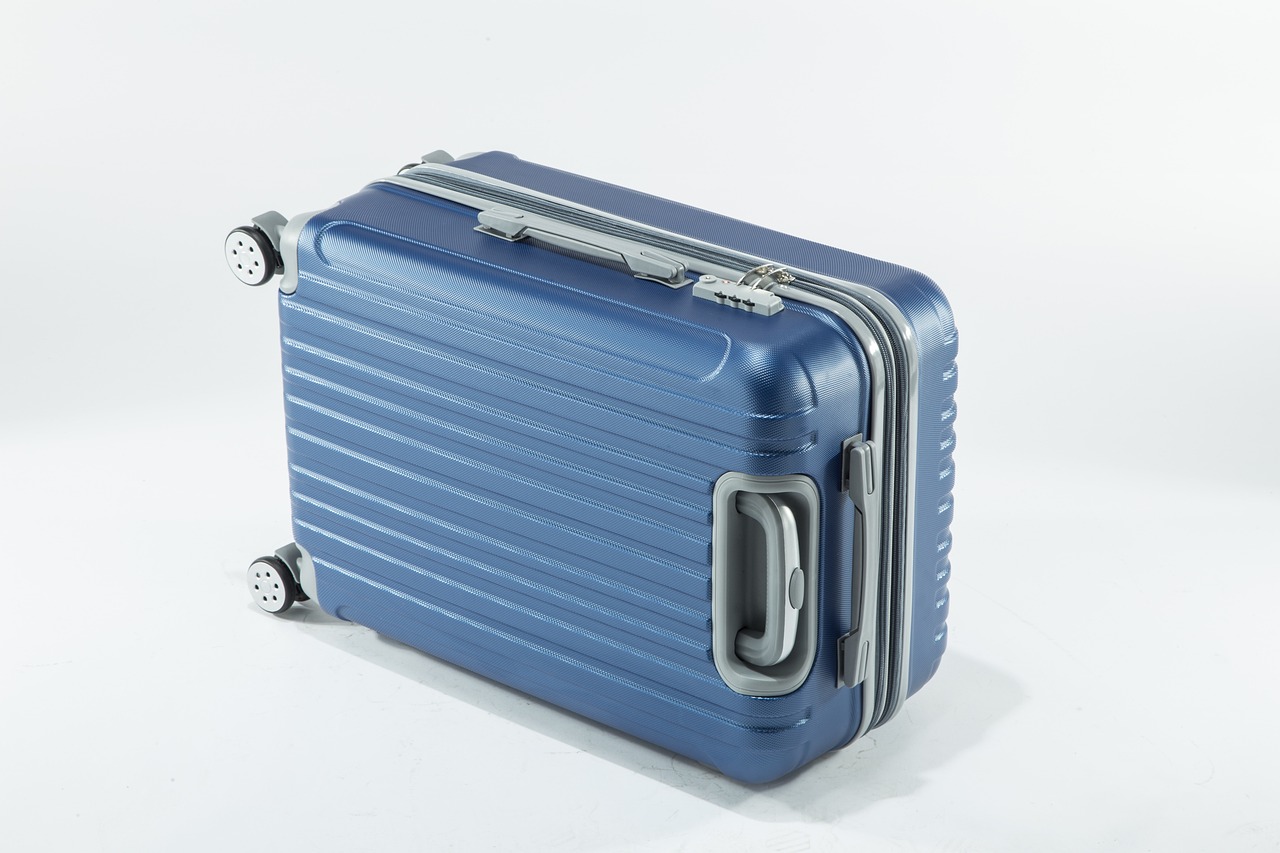
Basic Sewing Techniques
When embarking on your tote bag adventure, mastering some is essential to ensure your project turns out beautifully. Don’t worry if you’re new to sewing; everyone starts somewhere! The key is to familiarize yourself with a few fundamental skills that will not only make your sewing experience enjoyable but also enhance the quality of your finished bag.
First off, let’s talk about the sewing machine. If you’re using a machine, understanding its parts and functions is crucial. Most machines have a few basic stitches, such as straight stitch and zigzag stitch. The straight stitch is your go-to for most of the tote bag construction, providing a clean and strong seam. The zigzag stitch is perfect for finishing edges, preventing fraying, and adding a bit of stretch to your seams, which is particularly useful if you’re working with knit fabrics.
Next, let’s dive into seam allowances. This is the space between the edge of the fabric and the line of stitching. A common seam allowance is ¼ inch or ½ inch, depending on your pattern. Paying attention to seam allowances is crucial because it can affect the fit and durability of your tote bag. If you’re unsure, always check your pattern or make a test stitch on scrap fabric to see what works best for you.
Another important technique is backstitching, which involves sewing a few stitches in reverse at the beginning and end of your seams. This technique secures the stitches and prevents them from unraveling, ensuring your tote bag withstands the test of time. It’s a small step that makes a big difference!
Don’t forget about pressing your seams as you go. It may seem like an extra step, but pressing helps to flatten the seams and gives your bag a professional finish. Use an iron set to the appropriate temperature for your fabric type, and always press from the wrong side to avoid damaging the fabric. Trust me, this small detail can elevate your final product significantly!
Finally, let’s not overlook the importance of finishing techniques. There are various ways to finish the raw edges of your fabric, such as using a serger, pinking shears, or simply folding the edges under and stitching them down. Each method has its advantages, so choose one that suits your project and skill level. For beginners, a simple zigzag stitch along the edge can work wonders!
In summary, mastering these basic sewing techniques will set you on the path to tote bag success. Remember, sewing is as much about practice as it is about technique. So, grab your fabric, fire up that sewing machine, and let your creativity flow!
- What type of fabric is best for a tote bag? Cotton canvas is a popular choice due to its durability and ease of handling.
- Do I need a sewing machine to make a tote bag? While a sewing machine makes the process faster, you can also sew by hand if you prefer.
- How can I make my tote bag more sturdy? Consider using interfacing or adding a lining to enhance the structure of your bag.
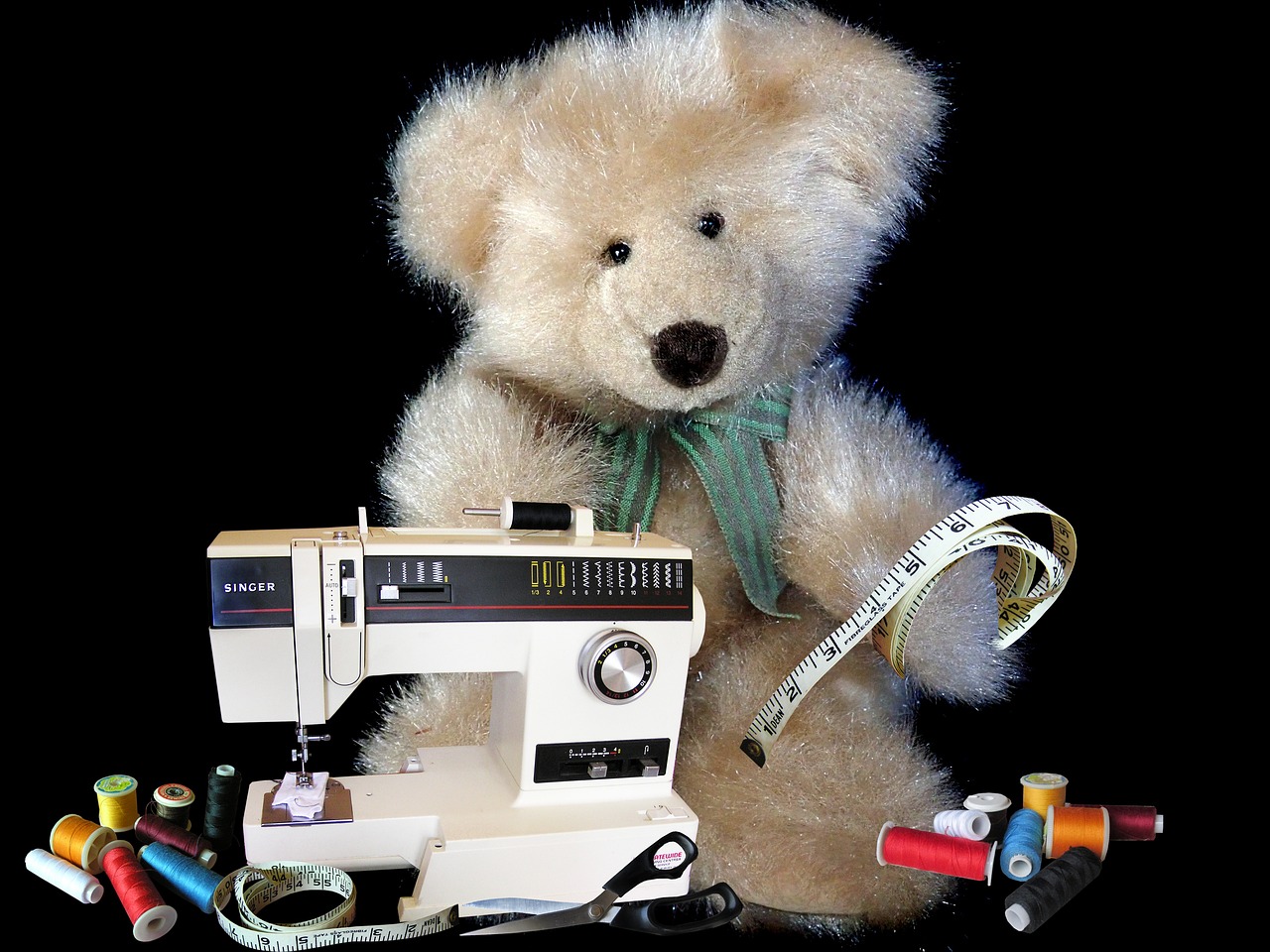
Adding Personal Touches
Personalizing your tote bag is like adding a sprinkle of magic to your creation—it transforms a simple accessory into something uniquely yours! Whether you want to showcase your personality, express your interests, or just make your bag stand out, there are countless ways to incorporate your flair into the design.
One of the simplest ways to add personal touches is through color choices. Selecting fabrics in your favorite colors or patterns can instantly make your tote bag feel more like you. Think about what colors resonate with your style. Do you prefer bold, vibrant hues that scream for attention, or are you more of a soft pastel kind of person? The fabric aisle is your playground!
Another exciting option is to add pockets. Who doesn’t love a good pocket? They’re not only functional but can also be a fun design element. Consider adding a small interior pocket for your phone or keys, or a larger exterior pocket for easy access to items like a book or water bottle. You can use a contrasting fabric to make the pocket pop, which adds visual interest to your tote bag.
If you’re feeling particularly adventurous, you can explore the world of embellishments. This could be anything from sewing on patches that reflect your hobbies to adding decorative stitching. Imagine a cute little patch of your favorite animal or a quote that inspires you. Not only do these embellishments add character, but they also tell a story about who you are. Just be sure to secure them well so they withstand the test of time!
For those who love a bit of art, consider using fabric paint or iron-on transfers. You can create custom designs that reflect your artistic side. Whether it's a simple design or a more intricate piece, this is your chance to be the artist of your own tote. Just make sure to follow the instructions for the paint or transfer to ensure it lasts through many uses.
Lastly, don’t underestimate the power of hardware. Adding unique buttons, zippers, or even decorative straps can elevate your tote bag from ordinary to extraordinary. A chic, oversized button can become a statement piece, while a sturdy zipper can add both functionality and style. Choose hardware that complements your fabric choices and overall design vision.
Incorporating these personal touches not only makes your tote bag one-of-a-kind but also creates a deeper connection to your creation. So, unleash your creativity, and let your tote bag reflect the amazing person you are!
Q: Can I use any type of fabric for my tote bag?
A: While you can technically use any fabric, it's best to choose sturdy materials like canvas or denim for durability.
Q: How do I prevent my embellishments from coming off?
A: Ensure that you sew or attach embellishments securely and consider using fabric glue for extra hold.
Q: What if I want to wash my tote bag?
A: If you've used fabric paint or added embellishments, check the care instructions to ensure they can withstand washing.
Q: Can I customize the size of my tote bag?
A: Absolutely! Just adjust the dimensions when cutting your fabric to create a bag that fits your needs.
Frequently Asked Questions
- What materials do I need to make a tote bag?
To create a tote bag, you'll need fabric (like cotton or canvas), thread, scissors, a sewing machine, pins, and an iron. You might also want to add interfacing for more durability.
- Can I use any fabric for my tote bag?
While you can use various fabrics, it's best to choose sturdy materials like canvas or denim. These fabrics provide durability and structure, making your tote bag functional and stylish.
- How do I prepare my fabric before sewing?
Start by washing your fabric to remove any chemicals and prevent shrinkage. After washing, iron it to eliminate wrinkles, and then accurately cut it to your desired dimensions.
- What are some basic sewing techniques I should know?
Familiarize yourself with straight stitching, zigzag stitching, and seam finishing techniques. These are essential for constructing your tote bag and ensuring it holds together well.
- How can I personalize my tote bag?
You can add pockets, embellishments like patches or embroidery, or even custom designs using fabric paint. This is a great way to express your style and make your tote unique!
- Is this project suitable for beginners?
Absolutely! This tote bag project is designed with beginners in mind. With simple steps and basic techniques, you'll be able to create your own stylish bag in no time.
- What if I make a mistake while sewing?
Don't worry! Mistakes are part of the learning process. You can often fix errors by unpicking stitches and redoing sections. Just take your time and enjoy the journey!
- How do I ensure my tote bag is strong enough?
Using sturdy fabric and reinforcing the seams will help. You can also add interfacing to the fabric for extra strength. Remember, double stitching can make a big difference!



















